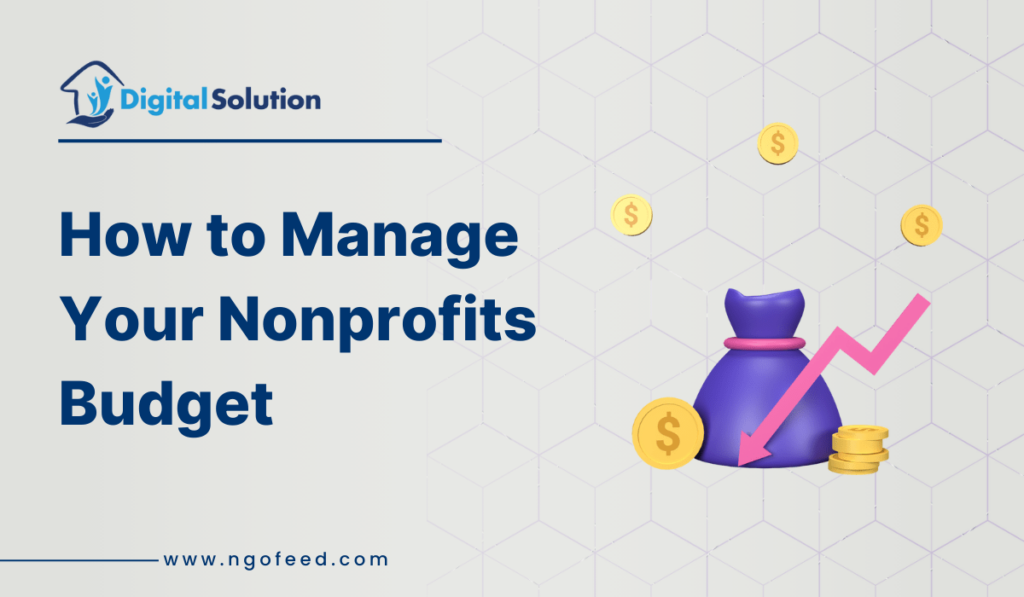How to Manage your Nonprofits Budget? Know Here: Financial planning enables a business to determine how it will afford to achieve its objectives and strategic goals. A business typically sets a vision and objectives, and then immediately creates a financial plan to support those goals. The financial plan describes all of the resources and activities that the company will require and the expected timeframes for achieving these objectives.
It is crucial to nonprofit organizational success because it compliments the business plan as a whole, confirming that set objectives are financially achievable.
Table of Contents
What is Budgeting?
Budgeting is an essential aspect of financial planning that involves creating a detailed plan for managing income and expenses over a specific period. It serves as a roadmap for individuals, families, and organizations to achieve their financial goals while ensuring that resources are allocated efficiently.
Also Read: How LinkedIn Ads Work for NGOs
Points to be Remembered
Additionally in order to generate specific reports, it is important to include the following practices:
- Budgeting – This is essential for all the rest of the planning you’ll be doing.
- Program Costs – Understanding the actual costs of programs can help you plan to scale them.
- Diverse Funding Sources – Donations, grants, sponsorships, and any other sources of funding you receive would be included here.
- Functional Accounting – Tracking expenses for program services and general and administration and fundraising overhead.
- Cash Flow – Monitoring for daily cash for day-to-day expenses.
- Accountability and Transparency – Demonstrating how funds are received and used so that if you are audited, you can share where all your funds are going. Sharing this kind of information can also help improve donors’ trust in your organization since they know the funds are being properly used.
How to Manage your Nonprofits Budget – Steps
1. Determine timeline
- Set target date for board approval
- Allow time for each step and for review and discussion
- Approve before beginning of fiscal year beginning of fiscal year
Also Read: How to Start a Marketing Campaign for Nonprofits
2. Agree on goals
- Prioritize program delivery goals
- Set organizational financial goals
- Clarify annual goals from strategic plan
3. Understand current financial status
- Review current year income and expense compared to budget
- Forecast to the end of the year
- Analyze and understand any variances
4. Agree on budget approach
- Assign roles and responsibilities
- Agree on authority to make decisions
- Agree on how much uncertainty can be included (how many unknowns)
5. Develop draft expense budget
- Determine costs (expenses) to reach program goals
- Determine costs to reach organizational and strategic goals
6. Develop draft income budget
- Project income based on current fundraising and revenue activities
- Project new income based on new activities
Also Read: Facebook Grants for Nonprofits
7. Review draft budget
- Verify that the draft meets program and organizational goals
- Review and discuss all assumptions
- Make adjustments, based on goals and capacity, to match income and expenses
- Review final draft for all goals and objectives
8. Approve budget
- Present to any committees as needed
- Present to the board for approval
9. Document budget decisions
- Create a consolidated budget spreadsheet and file
- Write down all assumptions
10. Implement budget
- Assign management responsibilities
- Incorporate into accounting system
- Monitor and respond to changes as needed
Allocation of Nonprofits Budget Management
Program Services (60-80%)
The majority of the budget should be dedicated to direct program services that fulfill the organization’s mission. This includes:
- Staff salaries for program delivery
- Supplies and materials needed for programs
- Direct service costs (e.g., food for a food bank, educational materials for a school)
Also Read: How to Choose the Best Crowdfunding Website
Administrative Expenses (10-20%)
Administrative costs cover essential operational functions that support program delivery but do not directly contribute to program outcomes. This includes:
- Salaries for administrative staff
- Office supplies
- Technology and software expenses
Fundraising Expenses (5-15%)
Investment in fundraising efforts is crucial for generating revenue. This includes:
- Marketing materials
- Event costs (e.g., venue rentals, catering)
- Staff time dedicated to fundraising activities
- Reserve Funds (5-10%)
Maintaining a reserve fund is important for financial stability, allowing nonprofits to cover unexpected expenses or fluctuations in revenue.
Also Read: Financial Management Tips for NGOs
To Sum Up
Effective financial management is essential for NGOs to fulfil their mission, maintain donor trust, and achieve sustainable impact. By developing a robust financial plan, diversifying funding sources, implementing strong internal controls, and promoting transparency, NGOs in India can navigate financial challenges successfully.
Additionally, investing in financial literacy, adopting modern tools, and fostering accountability are critical for long-term success. These practices, combined with a commitment to ethical standards, ensure that NGOs can continue making a positive difference in society.










